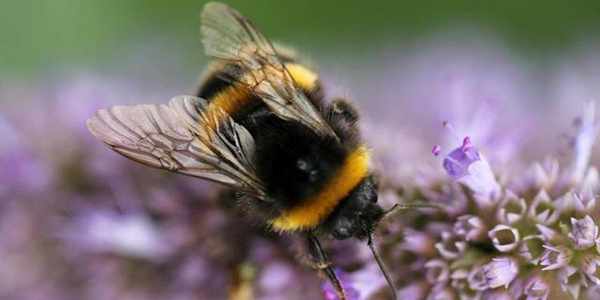After centuries of human impact on the world’s ecosystems, a new study from Flinders University details how a common native bee species has thrived on Fiji since the first human land clearances. In a new paper published in Molecular Ecology, researchers from Flinders University investigate the relationship between the spread of Homalictus fijiensis, a common bee in Fiji’s lowlands, and land clearance, as well as the introduction of new plants and weeds into the environment.
“Earlier research linked recent population expansion to warming climates, but our study reveals an interesting and positive response from an endemic species to human changes to the landscape that began around 1000BC,” says lead author and Flinders University researcher James Dorey.
“Because this species is a super-generalist pollinator (pollinates many plant species) and prefers to nest in open, cleared ground, one of Fiji’s most important bee pollinators appears to have benefited from human arrival and subsequent land clearing.”
After centuries of human impact on the world’s ecosystems, a new study details an example of how a common native bee species has flourished since the very first land clearances by humans on Fiji.
The researchers used phylogenetic analyses of mitochondrial and genomic DNA to look at changes in native bee populations in Fiji. They show that bee populations in Fiji expanded dramatically beginning around 3000 years ago and accelerating around 2000 years ago.
Mr Dorey claims that, in comparison to the main island, no corresponding change in bee population size was found for another major island, Kadavu, where human populations and agricultural activities have historically been very low.
“That is too recent to be explained by a warming climate since the last glacial maximum, which ended about 18,000 thousand years ago,” says the paper’s senior author, Associate Professor Michael Schwarz.

“Instead, we argue that the expansion of the Fijian bee population better corresponds with the early occupation of the Pacific islands by the somewhat mysterious Lapita people, and that this expansion accelerated with the increasing presence of later Polynesians in Fiji, who altered the landscape with their agricultural practices.”
The study demonstrates how the effects of early human dispersals can be inferred even when fossil records are unavailable and climate change complicates matters. One potential disadvantage of super-generalist pollinators, such as the endemic Fijian halictine bee Homalictus fijiensis, is that they may promote the spread of introduced weeds and exotic crop species, potentially exacerbating other ecosystem changes in the long run.
“Those research techniques could also be applied to a wide range of other animal species.” Changes in population sizes of mammals such as kangaroos, wombats, and koalas, for example, could be investigated by looking at their tick and lice parasites, which may have better ‘genetic signals’ of how populations have fared over the last few thousands of years or more, adds Associate Professor Schwarz, who believes high-resolution population genetic studies such as this are a good way to discriminate between species.
“A persistent question in ecosystem studies over the last 60,000 years or so has been the relative roles of climate change and human environmental modification.” For example, there is ongoing debate in Australia about whether the extinction of megafauna was caused by humans, climate change, or both. These types of questions can be addressed if there are very good fossil records, but what about ecosystems with very poor fossil records?
The new paper is the result of nearly a decade of scientific research into Fiji’s biodiversity by biological scientists and students from the SA Museum and Flinders University. Dr Stephen Zagala, research fellow in World Cultures at the SA Museum, says the new study provides fascinating insights into how current ecosystems were assembled during the various stages of human migration and settlement.
“Early European explorers and naturalists were unaware that for millennia, extensive human dispersals had already been transforming the ecologies of Pacific islands,” he says. “This research adds crucial details to an emerging picture of the Pacific as a highly cultivated landscape.”
















